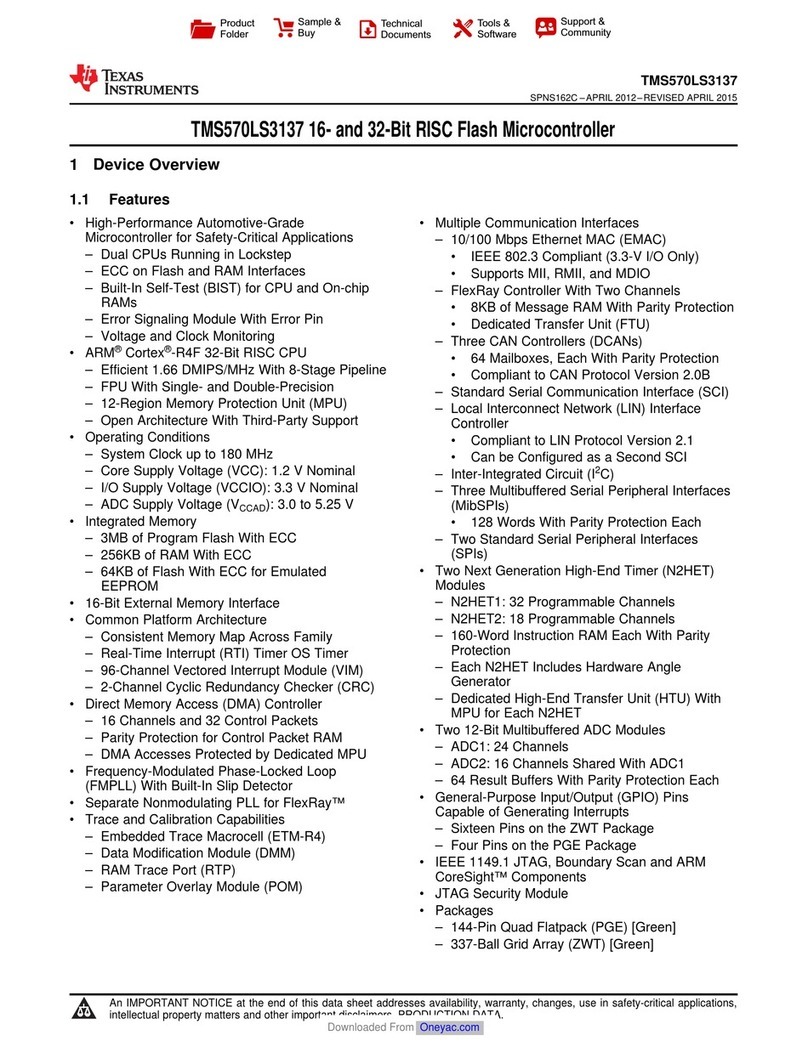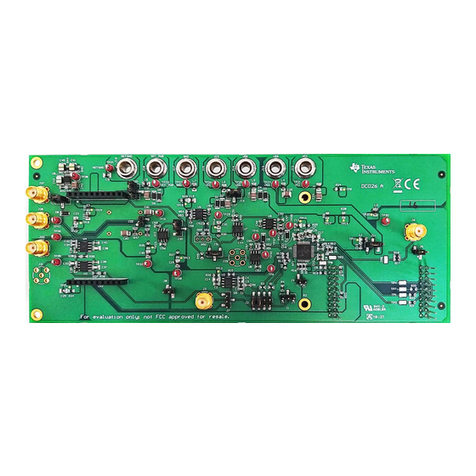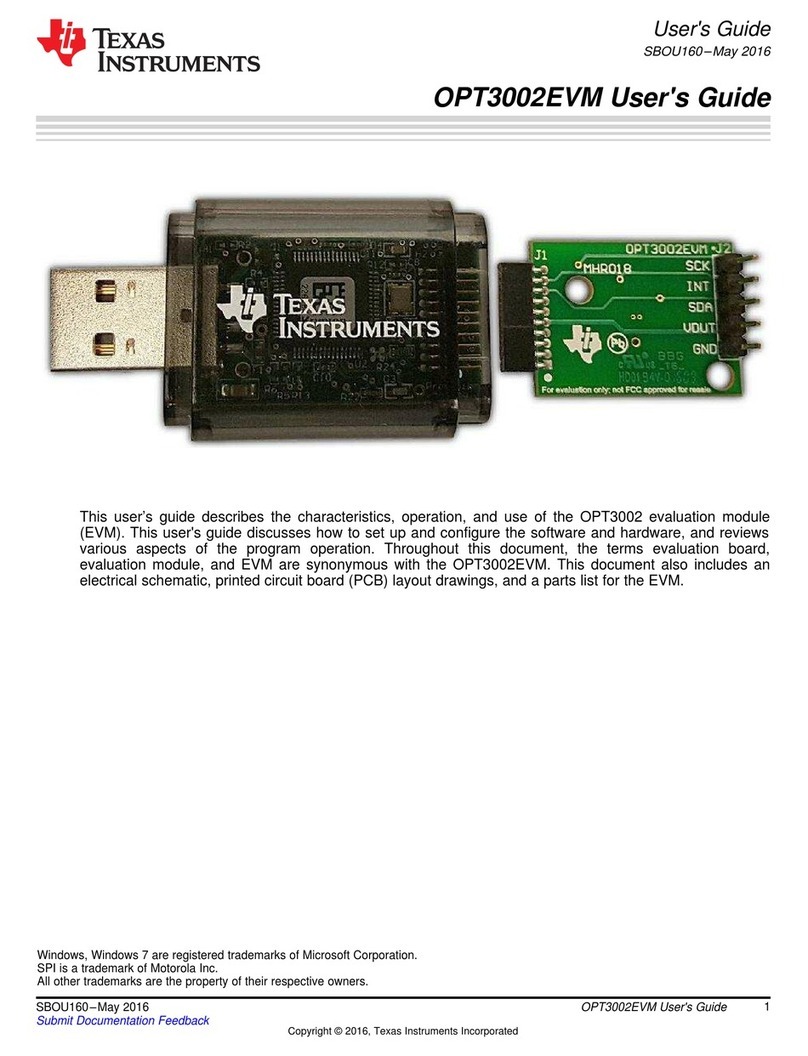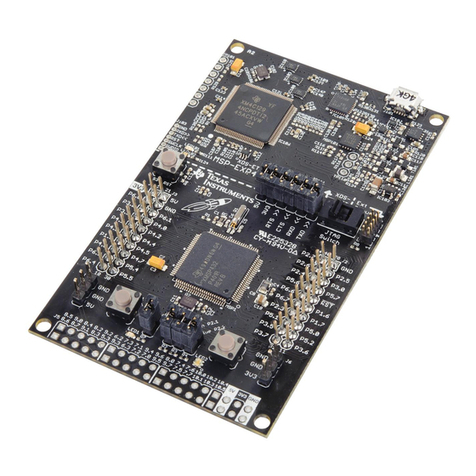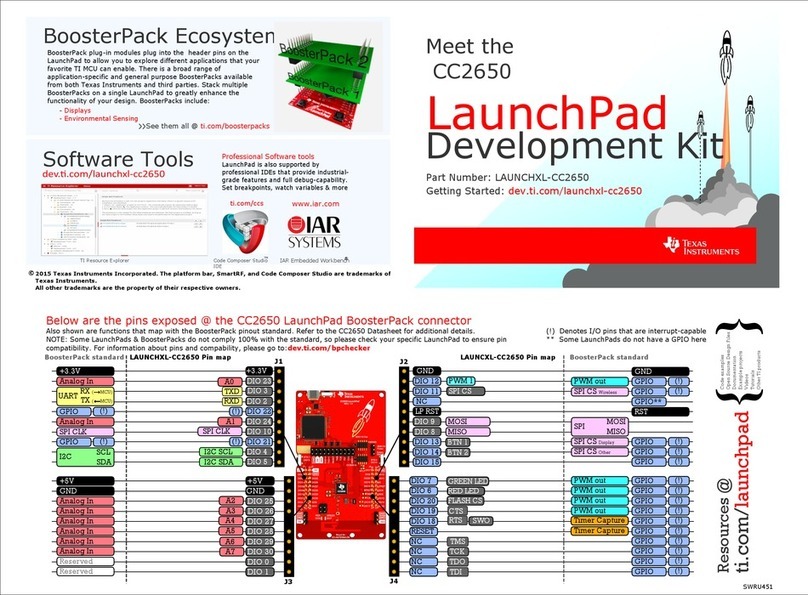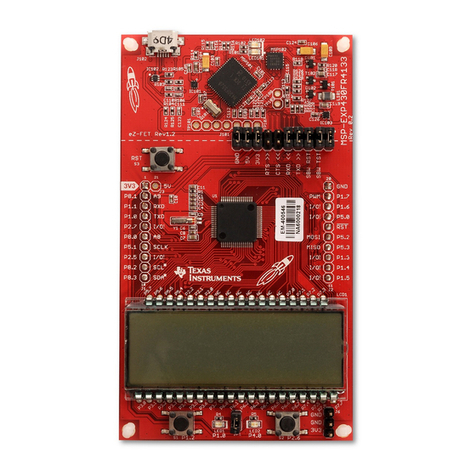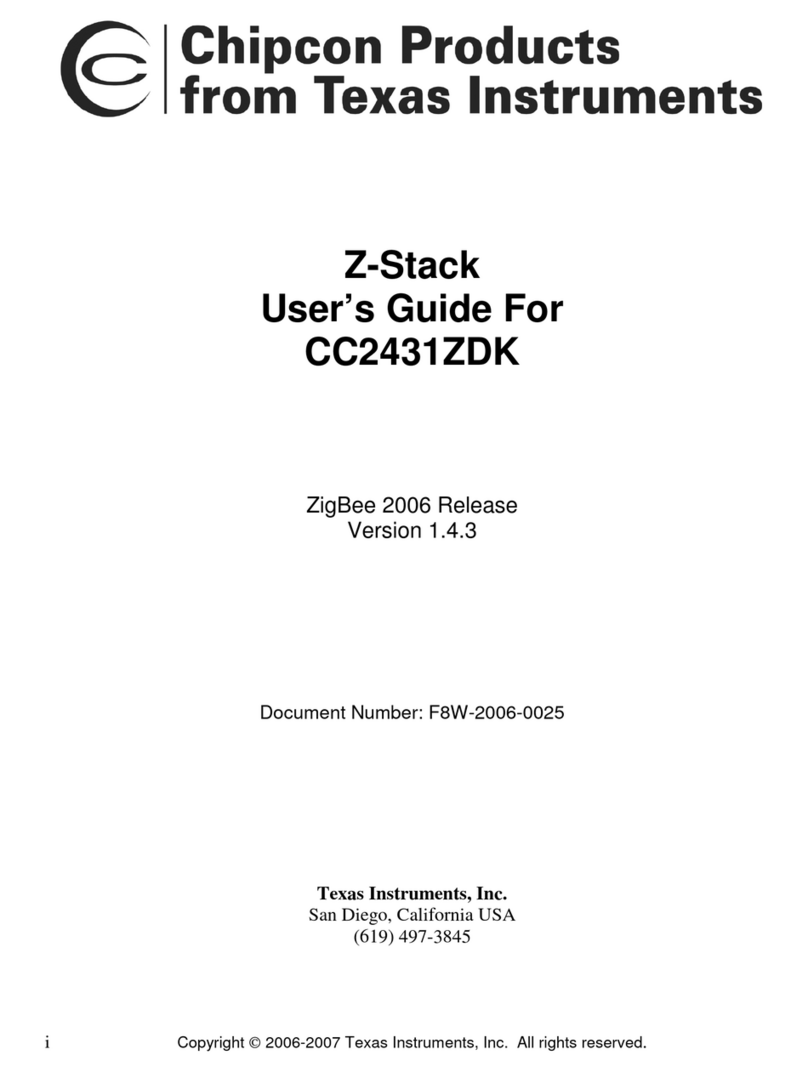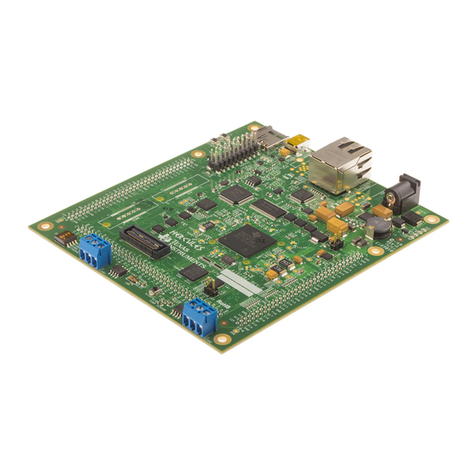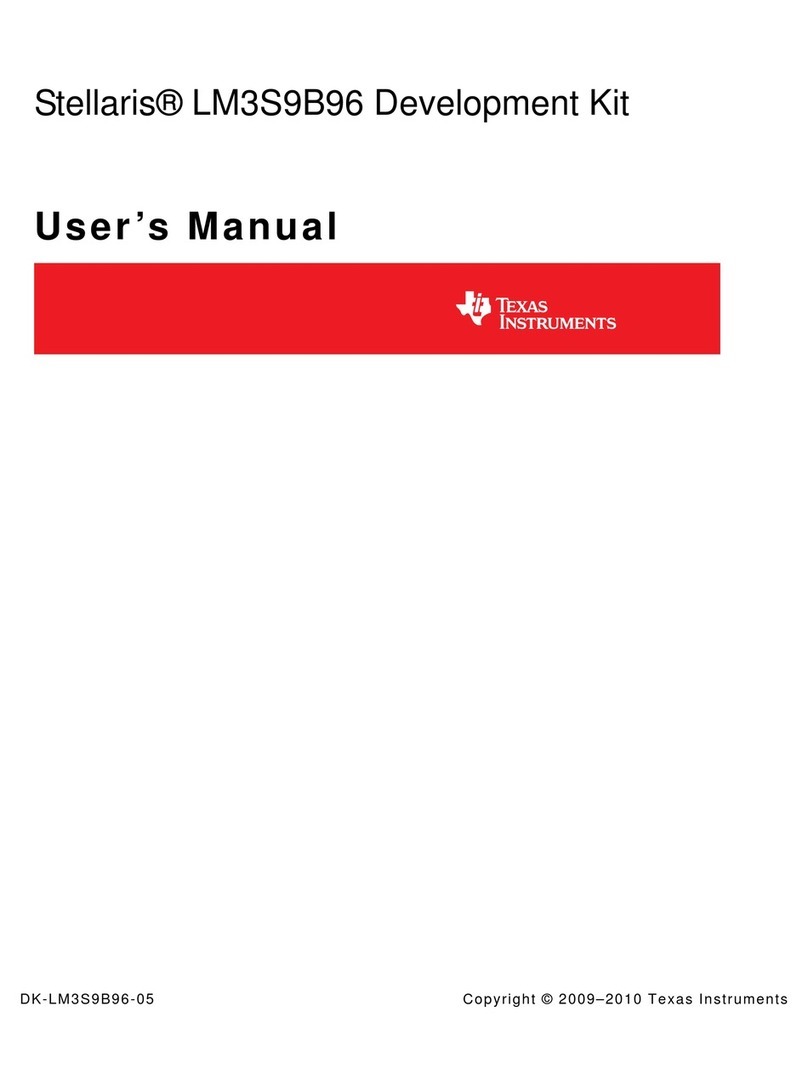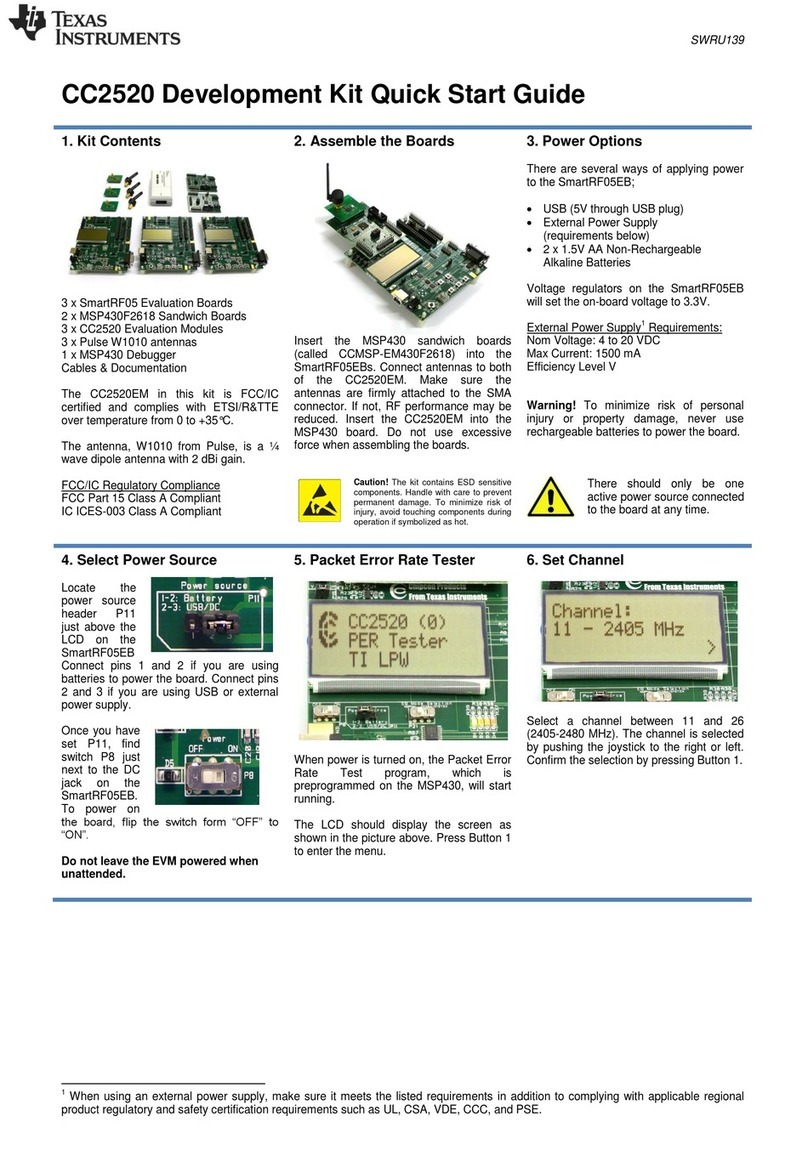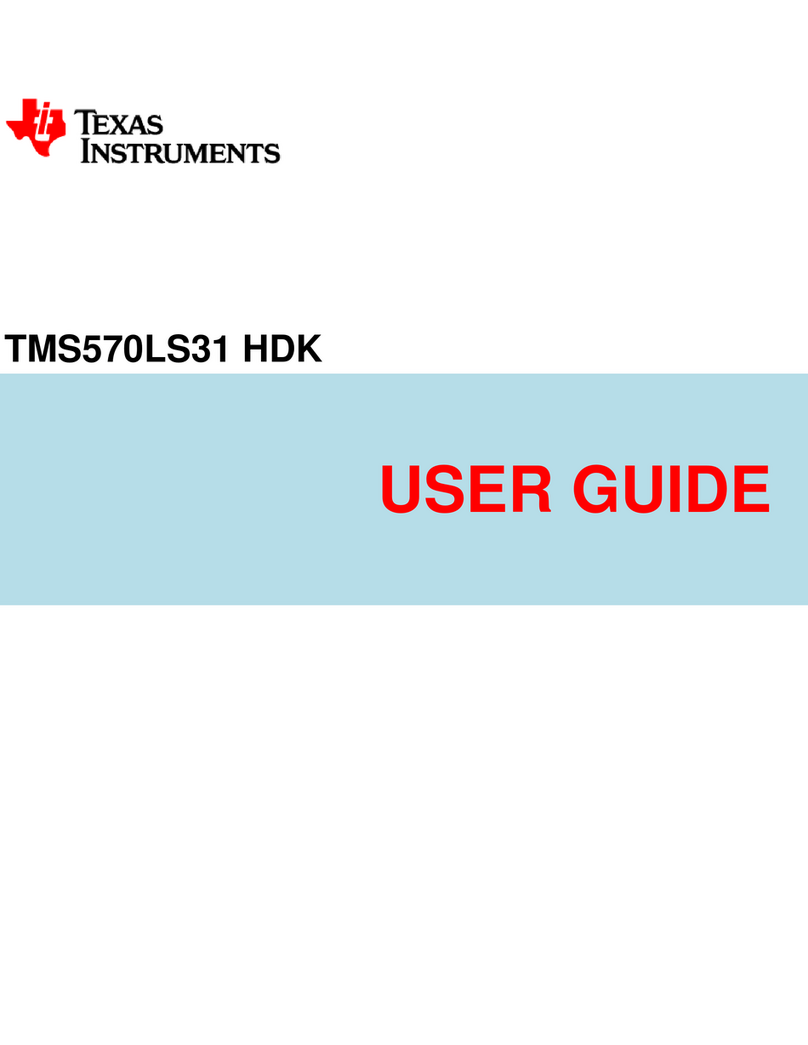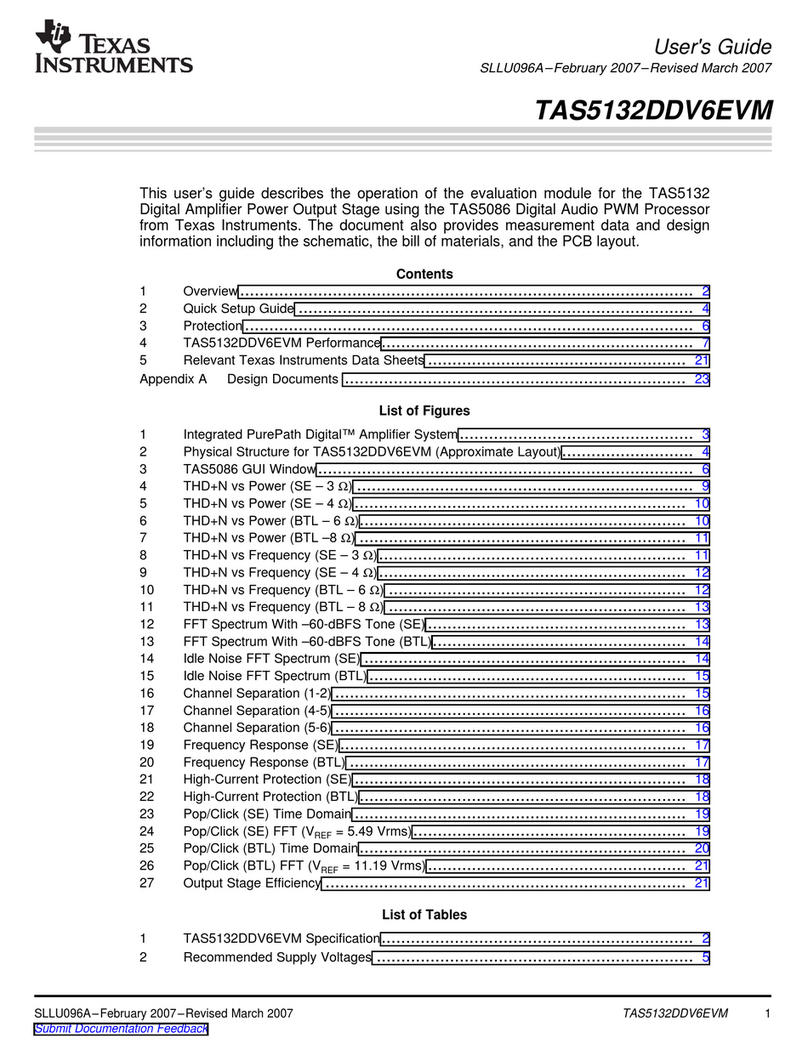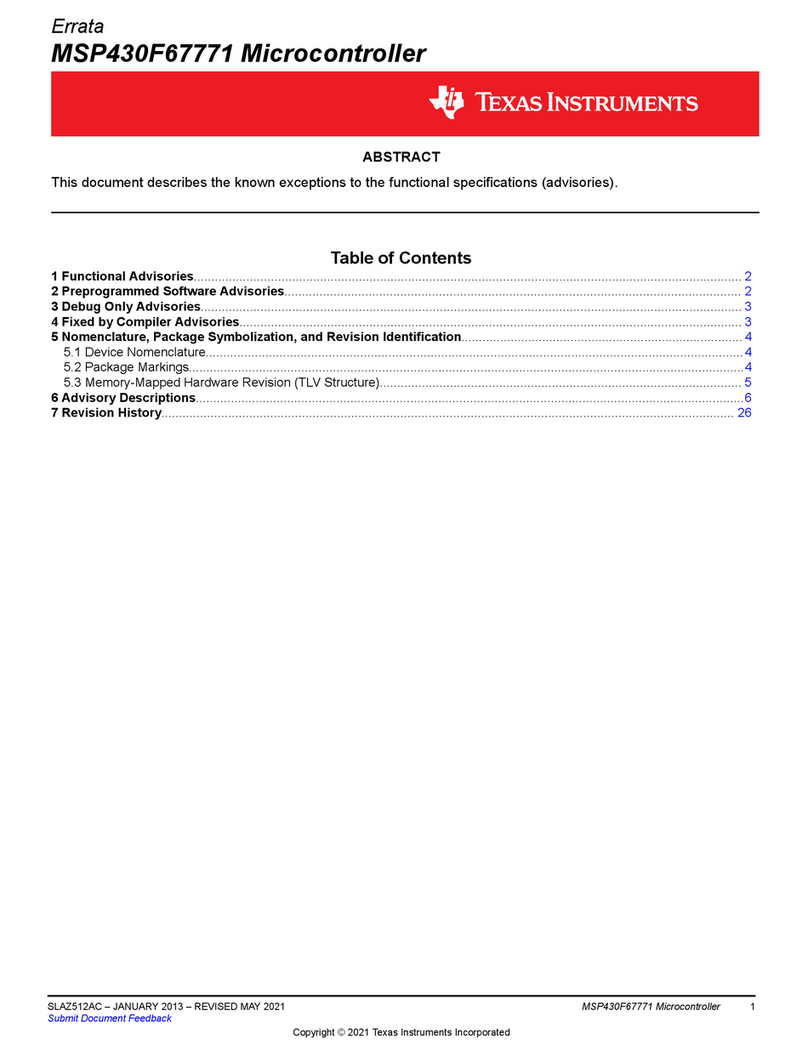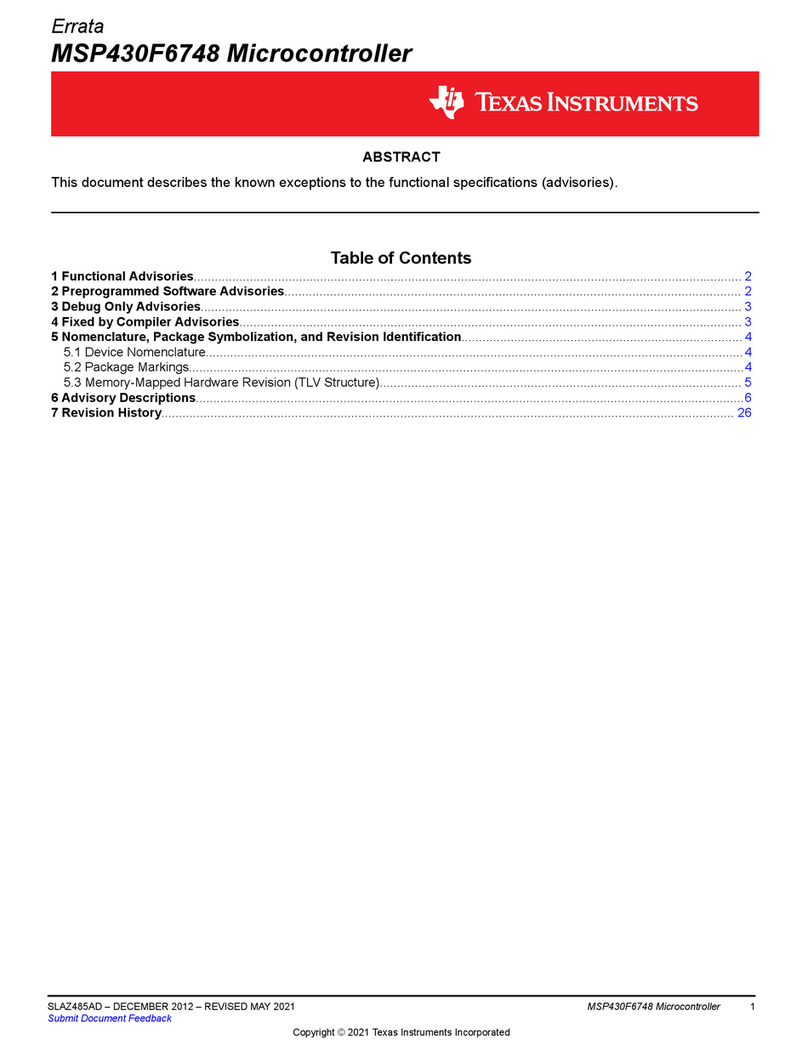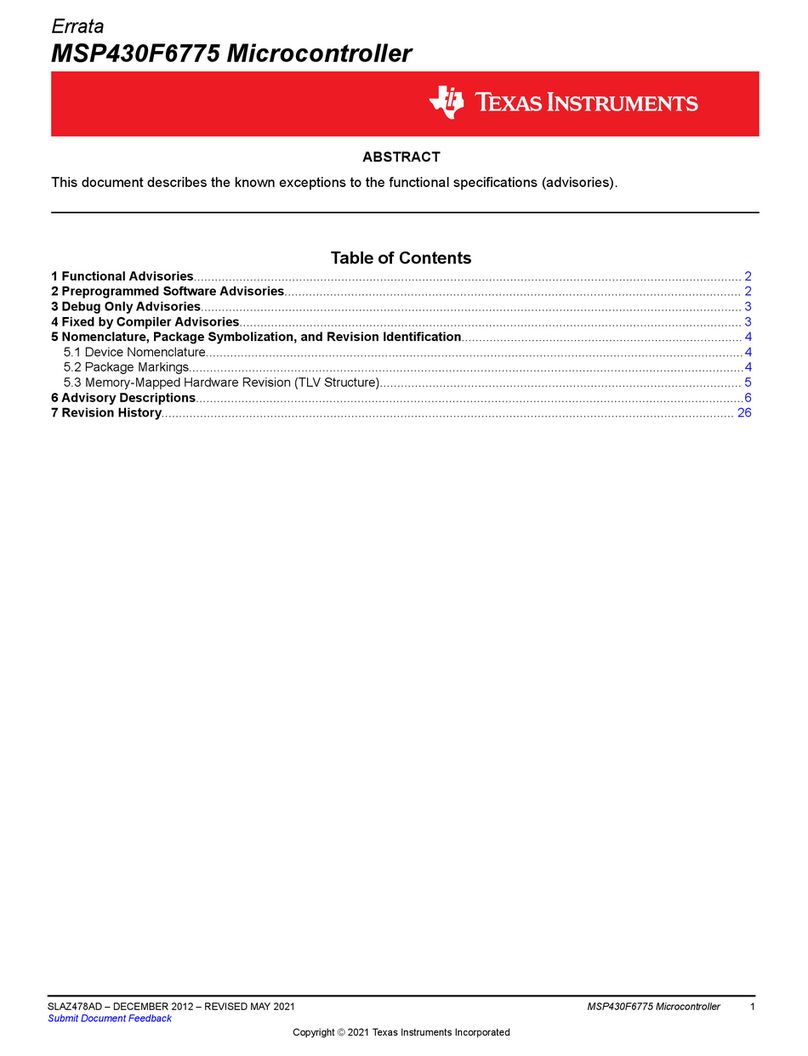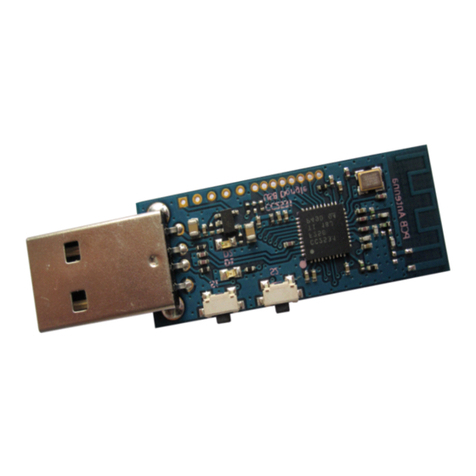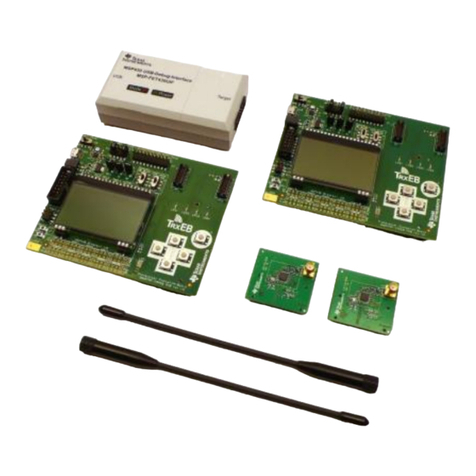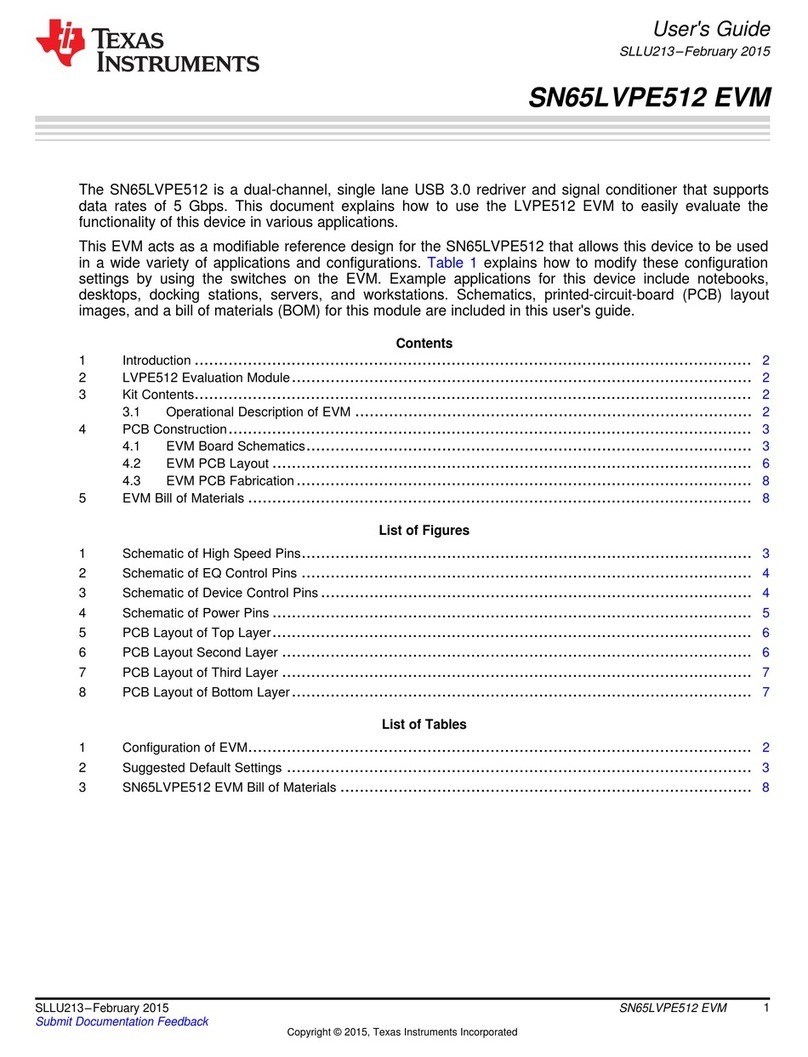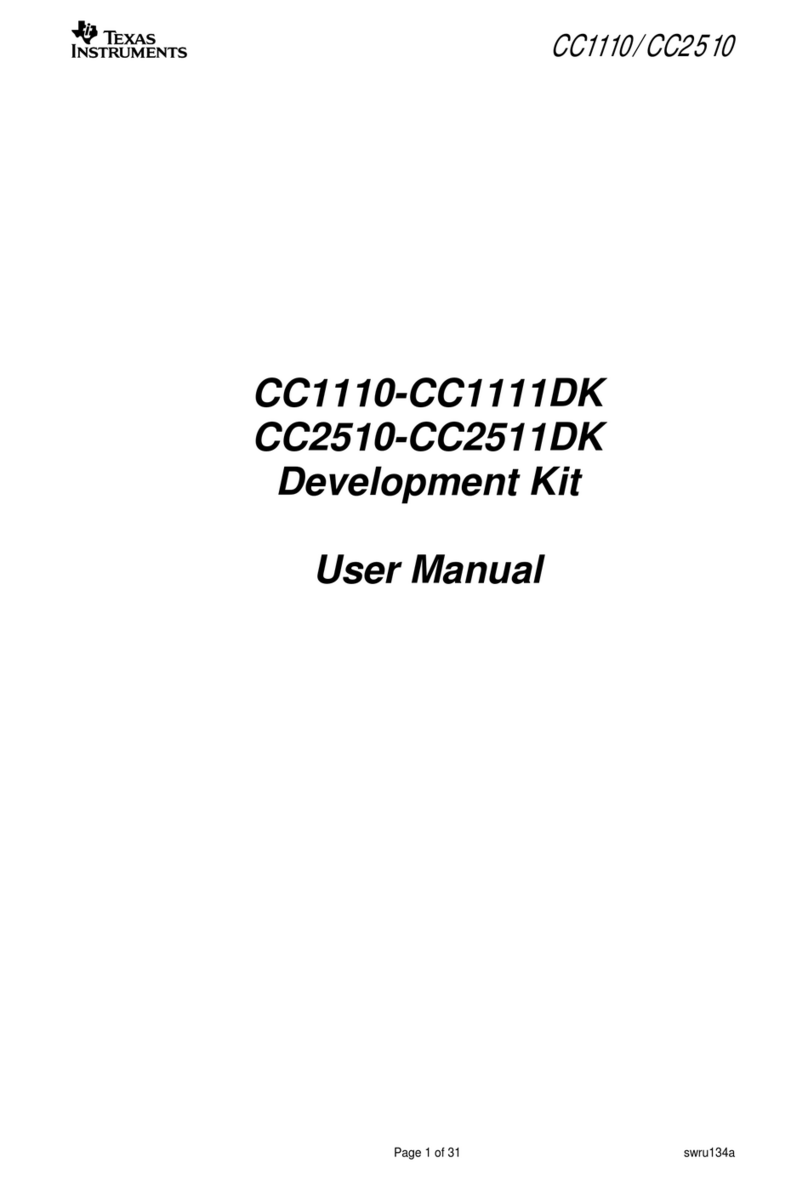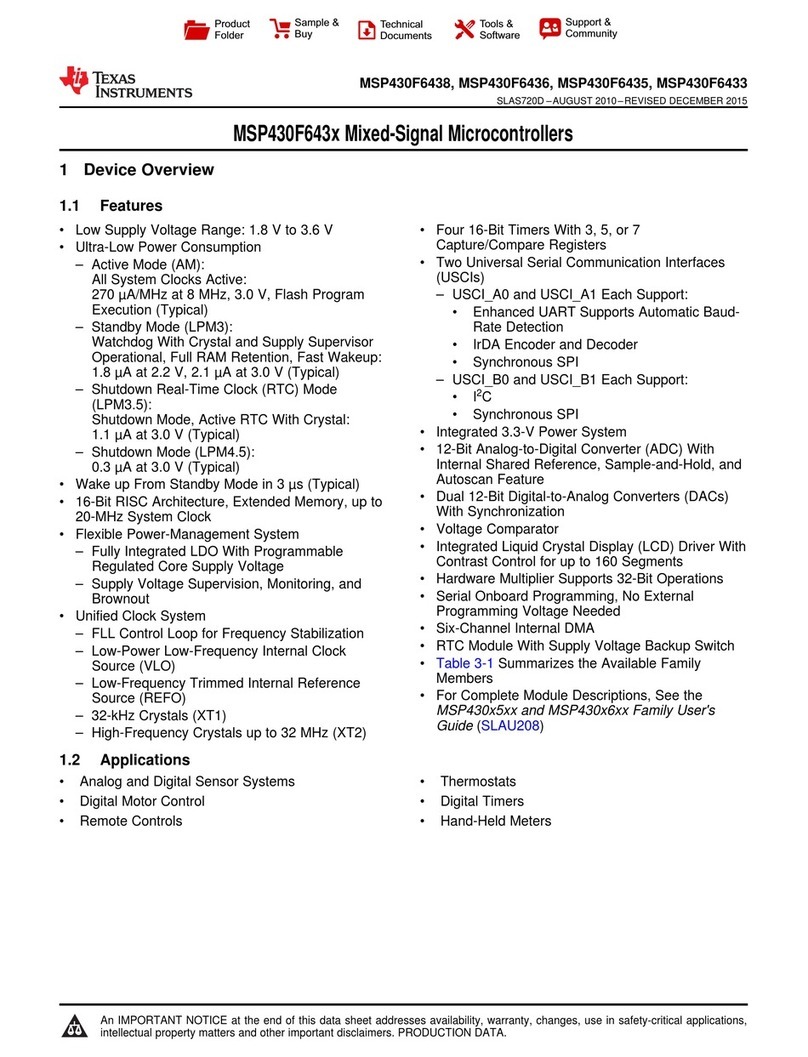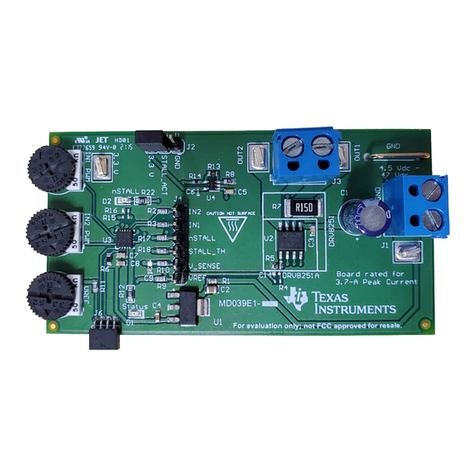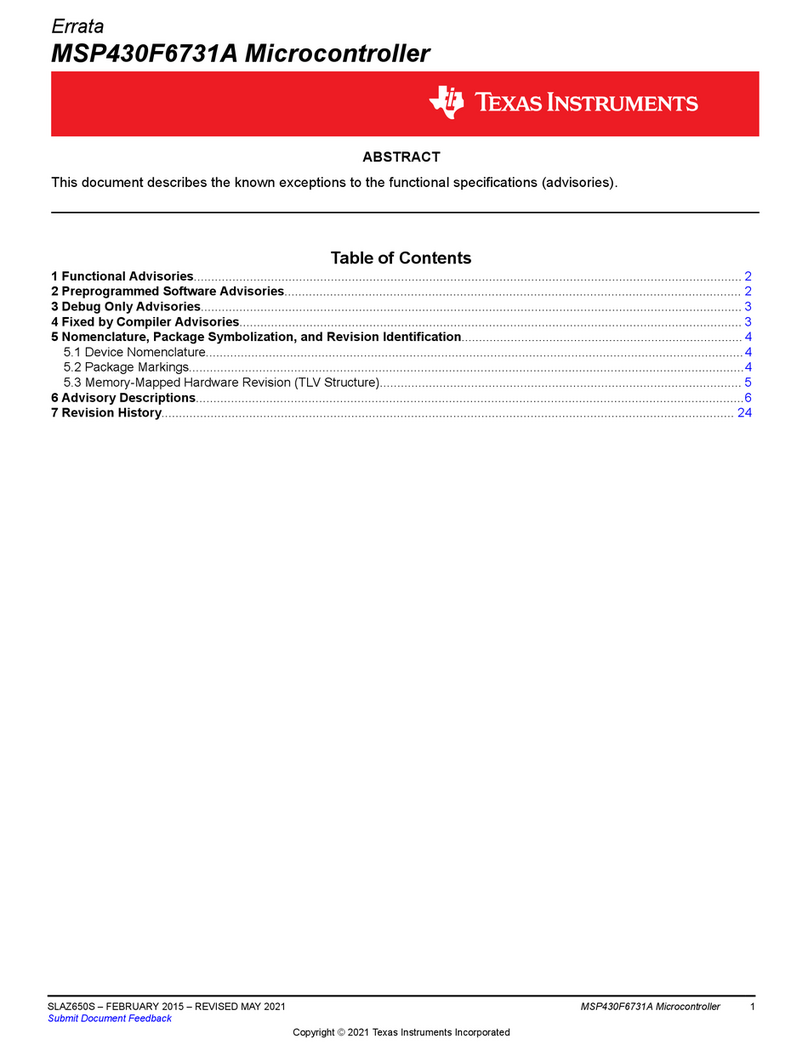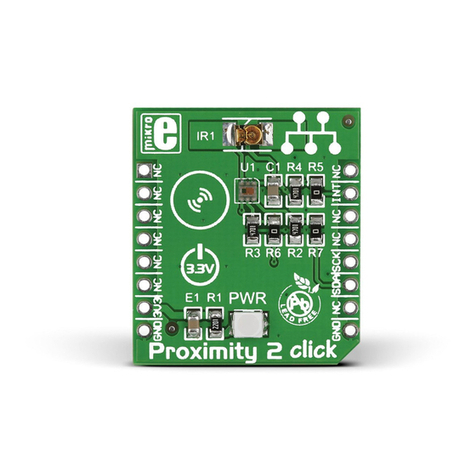
A closer look at your new
LaunchPad Development Kit
Featured microcontroller: CC1354P10
This LaunchPad is great for...
- Battery-operated wireless applications operating in the Sub-1 GHz (868 and 915 MHz) and 2.4 GHz ISM
RF bands. It features two Sub-1 GHz RF paths up to + 14 and +20 dBm and one 2.4 GHz up to +5 dBm
- Adding RF capabilities to your product using one of the supported protocols: Bluetooth LE, Zigbee,
IEEE 802.15.4g, Wi-SUN®, Wireless M-Bus, MIOTY®and proprietary protocols
What comes in the box?
LP-EM-CC1354P10-1
LaunchPad
CC1354P10 Microcontroller
- 48 MHz CPU
- 1 MB Flash, 256 kB RAM
- Programmable radio supporting
various protocols and up to +20 dBm
at either 868/915 MHz or 2.4 GHz
- Low power consumption
QSG
This Quick
Start Guide
10-pin
Debug Cable
2-wire
Power Cable
CC1354P10
{
{
- Four 32-bit or eight x 16-bit timers
- ADC with 8 channels, 12 bits and 200 ksamples/s
- DAC with 8 bits
- Serial communications: UART, SPI, I2C
- Two comparators
- Real-time clock
Separate LaunchPad
LP-EM-CC1354P10-1
Hardware setup
What do you need?
To use your new LaunchPad, you need to connect an external Debug Probe to either the 20-pin
LP-EM Debug connector on the edge of the board or to the 10-pin Debug connector and supply
power separately.
Option 1: Using the LP-EM Debug Connector
This is the easiest way to setup the hardware. It requires either an LP-XDS110 or
LP-XDS110ET Debug Probe (sold separately).
Simply connect the edge connector of the Debug Probe to the edge connector of the LaunchPad
and connect the USB port of the Debug Probe to the host computer. A secondary UART
communications channel will also be available and power to the LaunchPad will be provided
directly.
LP-XDS110 or LP-XDS110ET
LP-EM-CC1354P10-1
USB to the host
computer
USB to the host
computer
LP-EM Debug Connector
Together with a LP-XDS110 or
LP-XDS110ET, allows:
- Debugging and programming
- Communicating to the host via UART
- Powering the microcontroller
10-pin Debug Connector
Allows using an external JTAG Debug
Probe to debug/program the device
20-pin BoosterPack
plug-in module connector
(J1, J2, J3 & J4)
Button/Switch
BTN-2 (DIO14)
{
Antenna
CC1354P106T0RSK
Wireless Microcontroller
(under the RF shield)
LP-EM-CC1354P10-1 Overview
Button/Switch
BTN-1 (DIO15)
User LEDs
Red (DIO6)
Green (DIO7)
For additional details, consult dev.ti.com/?id=LP-EM-CC1354P10-1
When using the 10-pin debug connector, the UART communications channel must be wired
separately (this connector does not carry UART signals).
If using a standalone Debug Probe, consult its documentation to see if it supports the ARM
Cortex-M 10-pin standard.
Remove all jumpers,
except GND and 3V3
2-wire Power Cable
Jumper on the position
XDS110 Power
10-pin Debug Cable
Option 2: Using the 10-pin debug connector
Either a standalone debug probe or a separate LaunchPad with a built-in debug probe can
be used.
Connect the two boards as shown in the picture below:
